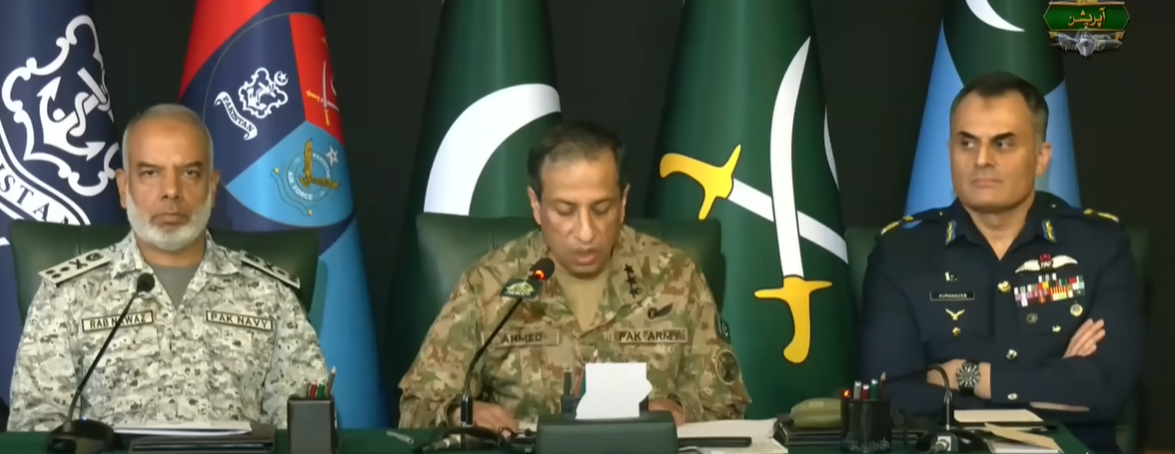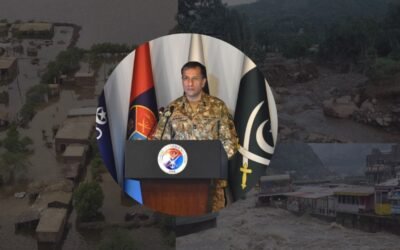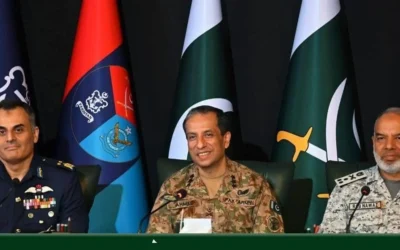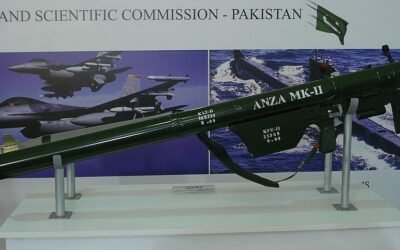Operation Bunyanum Merus Launched in Response to Indian Military Attacks
ISLAMABAD: On 11 May 2025, Director General ISPR Maj Gen Ahmed Sharif held a landmark press conference revealing the full scale and success of Operation Bunyanum Merus, launched by Pakistan Armed Forces in retaliation to India’s unprovoked attacks on May 6–7. These attacks had resulted in the deaths of innocent civilians, including women and children.
DG ISPR began by expressing gratitude to the people of Pakistan, the armed forces, and the media for standing united in what he described as “a decisive moment in Pakistan’s defense history.” He affirmed, “The Armed Forces have fulfilled their promise — we retaliated decisively and proportionately.”
Pakistan Armed Forces Conduct Precision Joint Strikes Across Multiple Domains
Maj Gen Sharif explained that the operation was a textbook display of tri-service jointness, enabled by real-time awareness, precision targeting, and integrated warfare across land, sea, air, and cyberspace. A total of 26 Indian military targets were hit, including air bases, missile storage sites, artillery positions, and intelligence facilities in Illegally Occupied Jammu & Kashmir and mainland India.
Among the key targets were:
- Air bases: Suratgarh, Sirsa, Bhatinda, Ambala, Srinagar, Jammu, Udampur, and Patankot.
- Missile depots: BrahMos storage sites at Bas and Nagrota.
- Radar and command centers: Including 10th and 80th brigades at KG Top and Noor.
- Intelligence centers: Rajouri and Nowshera are used for supporting terrorism inside Pakistan.
Pakistani Drones Penetrate Indian Territory Including New Delhi
The DG ISPR revealed that dozens of Pakistani drones flew over sensitive Indian cities and installations, including the capital New Delhi, demonstrating long-range unmanned capabilities. “This was a clear message that Pakistan possesses the reach and the will to act decisively,” he added.
Meanwhile, Pakistani cyber operations temporarily paralyzed Indian military systems and command infrastructure — showcasing the potency of Pakistan’s cyber warfare capabilities.
Navy and Air Force Show Unprecedented Readiness
Vice Admiral Rab Nawaz highlighted the Pakistan Navy’s defensive success, stating that the Indian aircraft carrier INS Vikrant never dared to approach within engagement range, retreating to the safety of Mumbai after carrying out false-flag provocations.
“Despite India’s numerical superiority, Pakistan Navy maintained complete sea domain awareness and deterred aggression,” said Rab Nawaz. Anti-submarine surveillance remained high, and critical assets such as Gwadar Port were secured throughout.
Air Vice Marshal Aurangzeb detailed the Pakistan Air Force’s use of electromagnetic spectrum warfare to jam and neutralize Indian drones, spoof long-range missiles like BrahMos, and enforce air supremacy. “Airspace sovereignty now begins with spectrum control — and Pakistan Air Force owns that spectrum,” he said. Advanced aircraft like the JF-17 Block 3 and cyber-electronic fusion played key roles in nullifying India’s offensive attempts.
Escalation Management with Strategic Restraint
DG ISPR reiterated Pakistan’s rational, mature, and calibrated response. “Despite the scale of Indian provocations, we precisely targeted only military installations — not civilians. This restraint demonstrates Pakistan’s strategic responsibility as a nuclear-armed state.”
He further noted that India asked for non-escalation only after Pakistan delivered its retribution. “We never requested a ceasefire. They did. After they were hit.”
India’s Parallel War Through Terror Proxies Exposed
While defending on the eastern front, Pakistan witnessed a sharp spike in Indian-sponsored terrorism in Balochistan and Khyber Pakhtunkhwa. DG ISPR confirmed that Indian-backed proxies were activated to distract Pakistani forces, but Pakistan successfully conducted over 93,000 operations nationwide, neutralizing hundreds of terrorists during the same period.
Disinformation and Psychological Warfare Tactics Defeated
Addressing misinformation, DG ISPR presented a clip showing India’s false claim about killing a sanctioned terrorist who was later shown alive, leading prayers. He also dismissed rumors of any Indian pilot being in Pakistani custody, calling it “social media fabrication.”
“We proved again — Pakistan doesn’t fabricate stories, we respond with results,” said the spokesperson.
Naval and Air Deterrence Prevented Sea-Based Conflict
Pakistan Navy monitored Indian naval movements and stood ready in coordination with the Air Force for joint retaliation if needed. “India chose to retreat its aircraft carrier instead of risking sea engagement,” said Vice Admiral Nawaz.
Meanwhile, PAF neutralized multiple hypersonic and cruise missile threats using a mix of spoofing, GPS jamming, and kinetic interception — forcing many Indian missiles to miss or land within their territory.
Final Message: Pakistan United, Pakistan Resilient
The press conference ended with a call for unity. “Pakistan’s military, government, youth, media, and public stood like a steel wall. Let the world know: this nation cannot be subdued by drones, propaganda, or proxy wars.”










